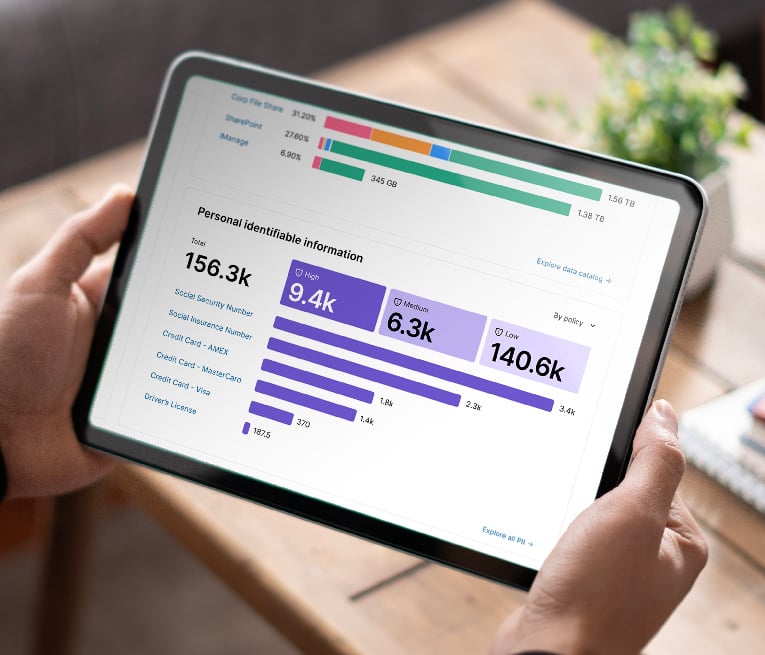In the fast-evolving legal landscape, the ability to manage and retrieve data effectively is no longer a luxury—it's a necessity. With the surge in unstructured data, legal IT leaders are turning to smart document tagging and classification as a cornerstone of their digital transformation strategies. The AI era demands precision, speed, and accuracy in handling information, making these tools indispensable for modern legal practices.
This blog explores why smart tagging and classification have become top priorities for IT directors, compliance officers, and legal operations managers, and how they can transform your firm's operational efficiency.
The Challenge: Managing Unstructured Data
Legal firms generate and store vast amounts of unstructured data, including contracts, case files, emails, and court documents. Without proper organization, this data:
- Becomes difficult to locate when needed
- Slows down workflows
- Increases the risk of errors and non-compliance
Traditional methods of data cleanup and categorization are no longer sufficient to meet the demands of high caseloads and regulatory pressures. Enter smart tagging and classification.
What Are Smart Tagging and Classification?
Smart tagging and classification leverage cutting-edge technologies, including automation and advanced algorithms, to:
- Tag Documents: Automatically assign metadata (e.g., client name, case number, document type) to files, making them easily searchable.
- Classify Information: Organize files into categories or groups based on predefined rules or patterns.
This automated approach eliminates the need for manual sorting, saving time and reducing administrative overhead.
Why Legal IT Leaders Are Embracing This Technology
1. Improved Productivity
Efficient tagging and classification mean:
- Quicker access to critical case information
- Reduced time spent on document searches
- Streamlined workflows for legal teams
2. Enhanced Accuracy
Manual data categorization is prone to human error. AI-powered tools ensure consistent and precise tagging, minimizing misfiled or lost documents.
3. Better Collaboration
Accurate classification enables teams to:
- Share information seamlessly
- Work collaboratively on complex cases
- Maintain a single source of truth across the firm
4. Compliance and Risk Mitigation
Legal firms must comply with stringent data protection regulations. Smart tagging tools:
- Identify and secure sensitive information, such as Personally Identifiable Information (PII)
- Ensure proper handling of documents to meet compliance standards
5. Future-Proofing Legal Practices
The AI era is here to stay. Firms that adopt smart data tagging and classification tools position themselves to:
- Adapt to technological advancements
- Scale their operations efficiently
- Stay competitive in a rapidly evolving industry
Pro Tip: Many law firms face significant challenges in finding client files, which often involves large-scale data migration to platforms like iManage or NetDocuments. To streamline this process, start by leveraging tools that can locate and tag client files efficiently. Focus on categorizing sensitive information to ensure data is classified and secured properly before migration. This approach saves time, reduces errors, and ensures sensitive data is protected during the transition.
How Shinydocs Can Help
Shinydocs simplifies document tagging and classification with advanced automation tools that:
- Enrich your data with automated bulk tagging and customizable classification rules to discover your data across all your file shares and data repositories.
- Scalable system that ensures consistency across large datasets.
- Simplified tagging process which makes document retrieval efficient and accurate.
Ready to Optimize Your Firm’s Data Management?
Don’t let unstructured data slow you down. Watch a demo at your convenience and discover how Shinydocs’ advanced tools can transform your firm’s approach to document management.
Book a meeting with one of our representatives to discuss your specific needs and learn how we can help you achieve seamless tagging and classification. Schedule a Demo Today!
Follow us on LinkedIn to stay updated on the latest trends in legal IT and data management. Like or comment on our posts to receive exclusive resources and insights tailored for legal professionals!
About Shinydocs
Shinydocs automates the process of finding, identifying, and actioning the exponentially growing amount of unstructured data, content, and files stored across your business.
Our solutions and experienced team work together to give organizations an enhanced understanding of their content to drive key business decisions, reduce the risk of unmanaged sensitive information, and improve the efficiency of business processes.
We believe that there’s a better, more intuitive way for businesses to manage their data. Request a meeting today to improve your data management, compliance, and governance.








